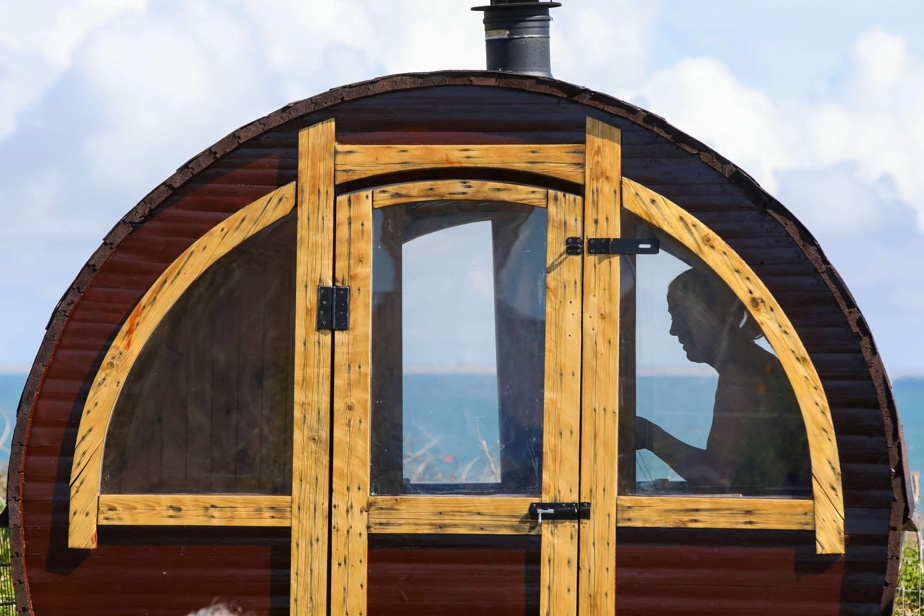(Dungarvan) After swimming in the icy waters of the Atlantic, Sharon Fidgeon puts on a bathrobe and immerses herself in the heat of a barrel-shaped sauna, feeling “incredibly alive” thanks to this tradition currently brought up to date.
“Having a sauna here allows me to stay a little longer in the sea,” adds this 52-year-old artist, stirring a few logs in the stove of the small structure mounted on wheels on the windswept Clonea beach.
She admits that this activity has “become a healthy addiction”.
During the COVID-19 pandemic, many Irish people took to sea swimming to escape lockdowns, an activity soon supplemented by the arrival of these barrel-shaped saunas, says Deirdre Flavin, who operates several in the region.
“The market continues to grow, the notoriety of these saunas is growing, people appreciate the experience and come back often,” she explains to AFP in one of these structures that she tows with her car.
In addition to their health benefits, they are also warm refuges in the wild and often wet and cold climate of Ireland, emphasizes Deirdre Flavin.
“People can now swim more comfortably in the sea all year round, because they can warm their bodies after swimming,” she continues.
Further afield on the south coast of County Cork, other guests have hired a sauna to relieve stress and aid post-workout recovery.
Rory O’Callaghan, 20, explains that the activity is popular with his hurling team, an Irish sport played with a stick: “It’s become fashionable.”
Owner Bronwyn Connolly suffers from arthritis, and when public saunas closed during the pandemic, she bought a portable one and towed it to Garrettstown Beach.
“I had a lot of pain, and the sauna and cold water soothed it, a dip in the sea after sweating managed to erase all my worries,” she tells AFP.
Therapy

PHOTO PAUL FAITH, AGENCE FRANCE-PRESSE
In addition to their health benefits, saunas are also warm refuges from Ireland’s wild and often damp and cold climate.
When Bronwyn Connolly realized that sports teams and businesses were starting to take an interest in it, she built a larger sauna using books and YouTube videos.
Near the large window with a view of the beach, a group sits on curved bleachers chatting around the fire and marveling at the ocean waves.
“It becomes a social activity, where friends meet and strangers meet. “The Irish are turning to activities that are less alcohol-based and more wellness-based,” she says.
If its small sauna was, in 2021, one of the first in the country, there are now “on all the beaches of Cork”.
Far from being new, this trend refers to the ancient Irish tradition of sweathouses », born in the 17th centurye century then out of fashion at the beginning of the 20the century.
Hundreds of remnants of these stone and igloo-shaped saunas remain in the Irish countryside. Heated by fires, they were used to cure colds, fevers, or even fight against rheumatism and arthritic pain.
As a nod to this, yoga instructor Carol Ni Stasaigh and her sports physiologist husband Dara Kissane have named their sauna on the County Wexford coast “Sweathouse”.
“In the past, people went there for medical, religious or even hallucinogenic reasons,” she explains to AFP on Baginbun beach. “This is not the case in our sauna, just hot and cold therapy, to release endorphins. »
